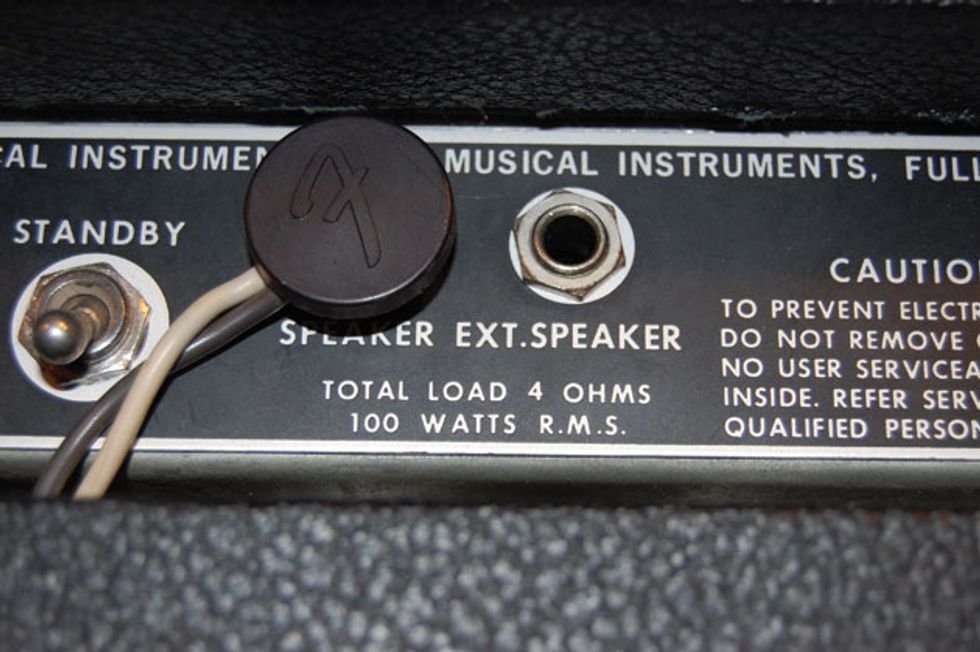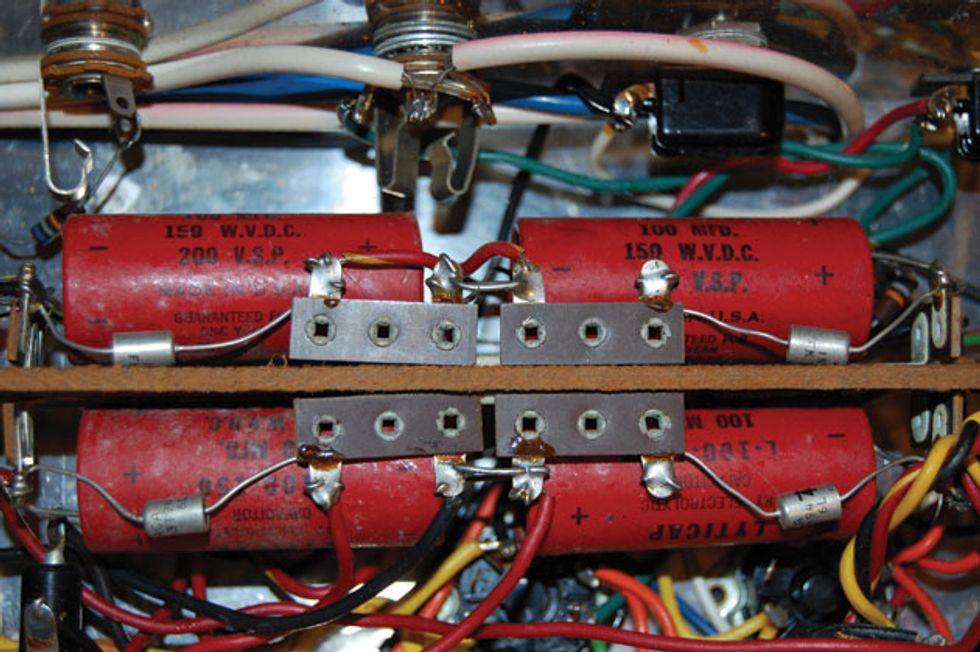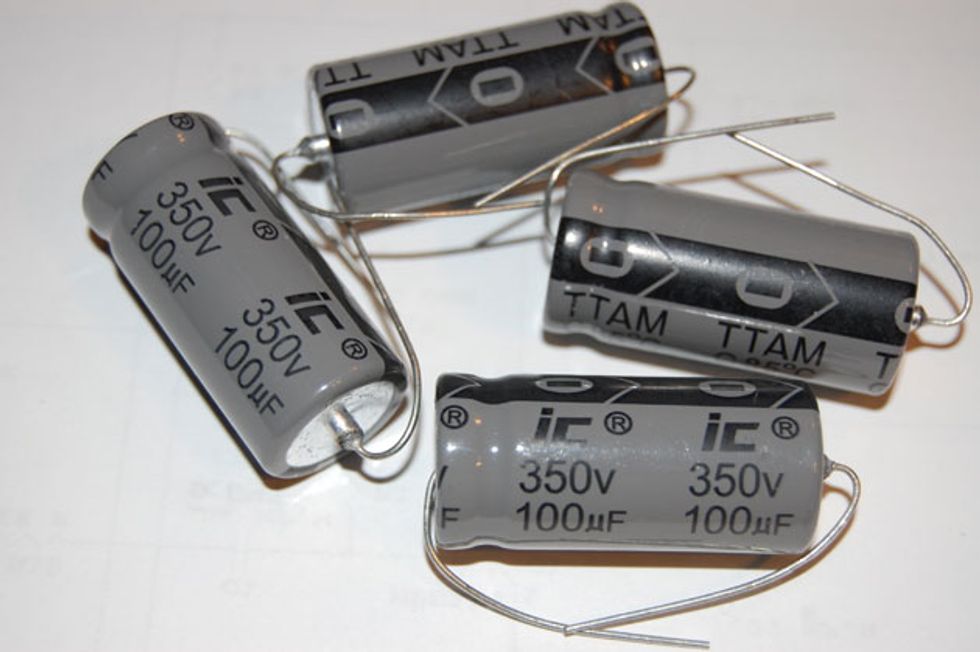Hi Jeff,
I have a 1975 Fender silverface Twin Reverb. It has two 8-ohm speakers wired in parallel, a 4 ? load. It also has an external speaker jack wired in parallel with the internal speaker jack. But the labeling on the chassis and schematics seems inconsistent and unclear. If the internal speaker load is 4 ohm and I connect a 4-ohm external load, the output transformer sees a 2-ohm load. Or if the external load is 8 ohm, the OT sees 5.6 ohm. Is either of these loads safe? Keep up the good work!
Ron Rumsey
Hi Ron,
Why Fender included external speaker jacks (Fig. 1) on its early combo amps is a bit of a mystery to me. On most Fender combo amps (except for later types with impedance switching), the output transformer impedance is optimized for the combo’s particular speaker load. A Deluxe Reverb output transformer, for example, would have an output impedance of 8 ohms in order to generate its full 20-watt power into the 8-ohm load of the single 12" 8-ohm speaker. On a Twin Reverb, there’s a 4-ohm secondary on the output transformer to develop the full 100 (or 80) watts across two 8-ohm speakers wired in parallel (for a 4-ohm load). A Super Reverb has a 2-ohm secondary winding to develop 40 watts across four 8-ohm speakers in parallel (a 2-ohm load).
just fine for the most part.
Fender’s external speaker jack was a nice feature, ’cause we all know more cabinets are better! But using it to power any other speaker would cause an impedance mismatch. Say, for example, you connect an 8-ohm cabinet to the extension speaker jack of a 100-watt Twin Reverb: This presents the amp with a total load of 2.66 ohms, which makes the output power drop due to the impedance mismatch. (From experience, I can guess the power decreases by about 30 percent.) It also increases the impedance load on the output tubes, causing more wear. So now you’re left with a Twin Reverb with an output of approximately 70 watts, with 46.7 watts powering the combo speakers and 23.3 watts powering the extension cabinet. Your sound may be better dispersed and, depending on the efficiency of the external cabinet, may even seem louder, but the bottom line is there’s an electrical mismatch. I must say, however, Fender seems to have overdesigned their output transformers in the past. Thousands of them have been running into improper impedances for decades, hanging in there just fine for the most part.
On the other hand, avoid impedance mismatches when it comes to Marshall amps. Fair warning! I hope that sheds a little light on the mismatch mystery.
Fig. 2. The four 100 µF 150V filter caps in a vintage Silvertone 1484.
Hey Jeff,
I’m in the process of bringing an old Silvertone 1484 back to life, and I came across your Premier Guitar post. Thanks for sharing your expertise! I have a quick question about one of your comments. You said that replacing the four 100 µF 150V caps in the voltage-doubler circuit could generally improve performance and increase voltage or capacitance values slightly. But how much is “slightly?” I’m having a hard time finding 100 µF 150V caps for less than $20 apiece, and I’m curious what my alternatives might be. Thanks for any help you can offer.
Jonathan Clay
Hi Jonathan,
Thanks! I’m glad you found my column helpful to your Silvertone resurrection. Regarding the capacitor values and ratings in the power supply: You can always go higher in voltage than what was originally installed in the amp. Capacitor design has come quite a way since those amps were designed and built, and capacitors can be substantially smaller these days.
Fig. 3. These replacement 100 µF 350V filter caps are more readily available from amp parts suppliers.
For an alternative to 100 µF 150V caps (Fig. 2), consider the more readily available 100 µF 350V caps (Fig. 3) from such suppliers as Mojo Musical Supply. They should fit fine and work well. (It might be more difficult to find slightly higher capacitance values such as 125, 150, or 200 µF, as these are relatively uncommon values.) I hope they give your Silvertone a killer tone!










![Rig Rundown: Russian Circles’ Mike Sullivan [2025]](https://www.premierguitar.com/media-library/youtube.jpg?id=62303631&width=1245&height=700&quality=70&coordinates=0%2C0%2C0%2C0)

















